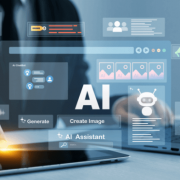This article was first published on Forbes.com, read the article here.
According to McKinsey’s 2020 global survey of 1,216 executives and managers across financial, retail, health, automotive, and telecom industries, 87% of respondents said their organizations are either already facing skill shortages or they anticipate skill shortages within the next five years. The impact of such talent gaps will vary by industry, with healthcare, pharmaceutical, and medical products industries least likely to be disrupted, and financial services, tech, and telecom industries most likely to undergo a serious step change.
Forty-three percent of the survey’s respondents said they expect data and analytics (D&A) to be the area with the greatest skills gap, making D&A the most prominent area of concern, followed by IT management and executive management. Clearly, D&A leaders are under substantial pressure to deliver transformative results in today’s economy. The demand created by skill shortages is only exacerbated by rapidly expanding data, technology, and digital economies.
In order for data & analytics leaders to deliver the transformation their organizations depend on, it’s crucial to connect the organization’s data & analytics roadmap to its corporate strategy in a way that’s both affordable and sustainable. If you are a leader responsible for data & analytics strategy and execution in your organization, this may mean you’re also responsible for getting buy-in from your CEO.
As the co-founder and CEO of a global top 40 D&A solutions provider, I’ve found success with three concrete strategies for accelerating the execution of an enterprise data & analytics roadmap by securing the right leadership, lowering TCO (total cost of ownership), and pursuing speed of execution to achieve intended outcomes.
Build sustainable teams for data & analytics outcomes.
Imagine you are responsible for enterprise D&A platforms at an organization. Chances are, you’re dealing with multiple complementary stacks of cloud and analytics technology, which you may have inherited as a result of inorganic growth. As your organization adapts to these changes and/or moves from on-premise to cloud infrastructure, hiring specialists may not be sustainable – not only is it hard to find and recruit these unicorns, but they’re extremely expensive at scale.
So how do you go about building a sustainable team? One approach is to build a team of generalist leaders supported by competent advisory teams with access to a pool of specialists who can offer best-in-class advice as needed. This arrangement affords you the best of both worlds.
Embrace simplicity, self-service, and automation.
Organizations commonly spend north of 20% in annual maintenance fees covering support, upgrades, and peace of mind, without asking if their fixed investments are actually worth the cost. On the flip side, simplicity, automation, and self-service are three pillars of a simple framework to find cost-savings opportunities and make room for growth investments.
If your stack is stable and innovations aren’t solving your organization’s problems, consider self-service and intelligent automation in order to save a lot of time, effort, and cost. Strategies such as automating your continuous integration and continuous delivery (CI/CD) pipeline for D&A combined with intelligent automation using robotic process automation (RPA) and data-driven intelligence can easily save organizations up to 75%.
Shift your teams away from a DIY mindset.
When modernizing data & analytics platforms, there may be a tendency for teams to operate with a DIY mindset. However, moving from one analytics platform to another requires an assessment of the current and target systems, as well as rationalization, extraction of the metadata, conversion of reports, and validation. This process can be complicated by gaps in technical skills and a lack of built-in automation tools–thereby requiring manual effort, as well as more time and money.
But if you leverage reusable assets from partners that can mitigate migration risk, you may be able to save time and money while driving transformation. Specialized tools can significantly accelerate this process up to 80% by automating manual activities and enabling businesses to focus on what matters most for their bottom line.
As leaders seek to accelerate D&A roadmaps with affordable investments, these three strategies–building sustainable teams; embracing simplicity, self-service and automation; shifting away from a DIY mindset–can help organizations become data-driven, modern and competitive while substantially cutting costs and accelerating speed of execution. In a world where up to 30% of hours worked globally could be automated by 2030, it’s vital for organizations to stay ahead of the curve on a sustainable trajectory.
Recent Blogs

AI-Powered Retail: 2025’s Biggest Advances and the Trends Poised to Shape 2026
November 18, 2025

Redefining Enterprise AI: The Power of Multimodal GenAI in an Agentic Era
October 30, 2025

Why Traditional HCP Engagement Fails—and How AI is Changing the Game
September 17, 2025

The Language of Care: Unlocking Patient Sentiment with AI
September 11, 2025


